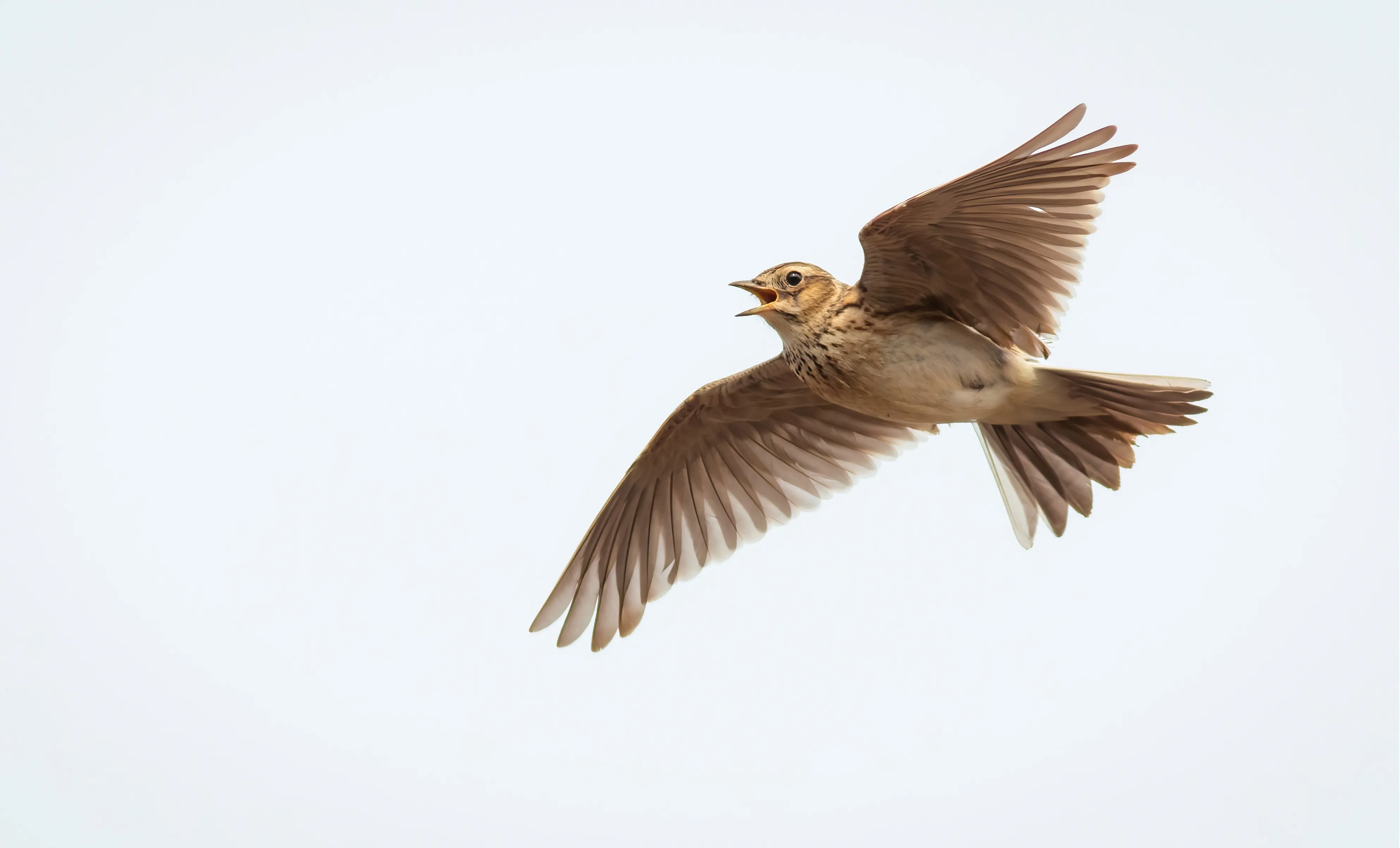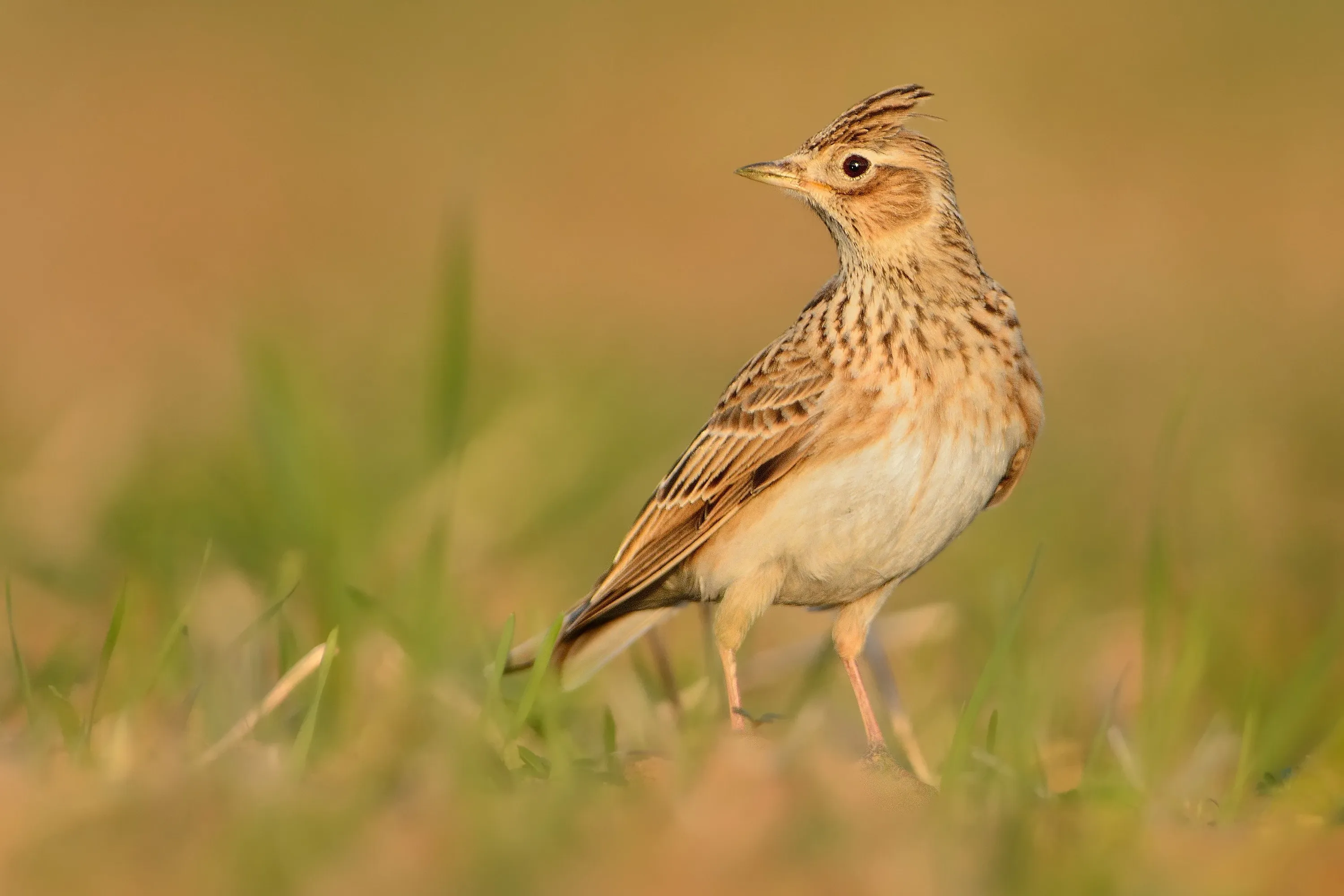
Skylark conservation - Advice for farmers
The skylark can be found on all types of farmland. Densities are highest on lowland arable and mixed farming systems.

On this page
Skylark in brief
The UK Skylark population has declined by 63% since 1967. This decline was largely caused by the move from spring to winter cereals, as well as by intensified grassland management.
Key points
- Provide suitable nesting habitat on arable farms using spring cereals or Skylark plots in winter cereals.
- Skylarks can nest successfully in late-cut hay meadows, or silage fields which are not cut before late May and subsequent cuts are at least seven weeks apart.
What this species needs
Mid-field areas in which to nest and feed
Skylarks occupy open fields to avoid predators. They cannot be conserved by measures taken within 10m of the field boundary.
Seeds and weeds throughout the year
Adults feed on leaves and seeds of crops and weeds. Their strong association with weedy stubbles in winter shows the importance of seeds and weed leaves.
Nesting habitat to produce up to three broods every year
Skylarks nest on the ground, in vegetation which is 20–50cm high. This vegetation must be open enough to give the birds easy access to the ground. They need to make two or three nesting attempts between April and August to sustain the population. Crops such as winter wheat generally grow too tall and thick to enable more than a single brood. Silage fields attract Skylarks, but are generally cut too frequently to allow successful breeding.
Insects and spiders in the spring and summer
Skylark chicks are fed exclusively on insects and spiders for the first week of life. These are also an important part of the diet of adults from April until August. Insects are collected from crops and pasture.

How to help
On arable land
- Include spring cereals or a spring break crop (other than oilseed rape, which grows too quickly) in the rotation, where viable. This will provide ideal nesting habitat.
- Create Skylark plots (small undrilled patches or patches which are sprayed out after crop establishment) in winter cereals to boost nesting success.
- Weedy overwinter stubbles are the most beneficial winter-feeding habitat for Skylarks on arable farms. The best stubbles are cereal stubbles which receive no pre-harvest glyphosate and no post- harvest herbicides throughout the winter. Can you delay cultivation of stubbles going into a spring crop until February or March?
- Use beetle banks to provide over-wintering habitat for beneficial insects. Beetle banks are two- metre grass strips through the middle of arable fields. Such fields can be managed as one unit, as the headland is still cropped.
On grassland
- Skylarks can nest in silage fields. However, these nests are only successful if the field is not cut or grazed between early April and the end of May. Subsequent cuts must be at least seven weeks apart to enable success for later nests.
- It may be more practical to return an unproductive, sparse grass ley to hay meadow management. This could provide a safer nesting habitat.
- Introduce arable crops on livestock farms (other than maize) to provide feeding and nesting habitat in pastoral areas.
- Skylarks can nest in grazed pasture if you can maintain a tussocky sward with a low stock rate through the spring and summer. Unimproved grasslands managed without inputs often hold high densities of Skylarks.